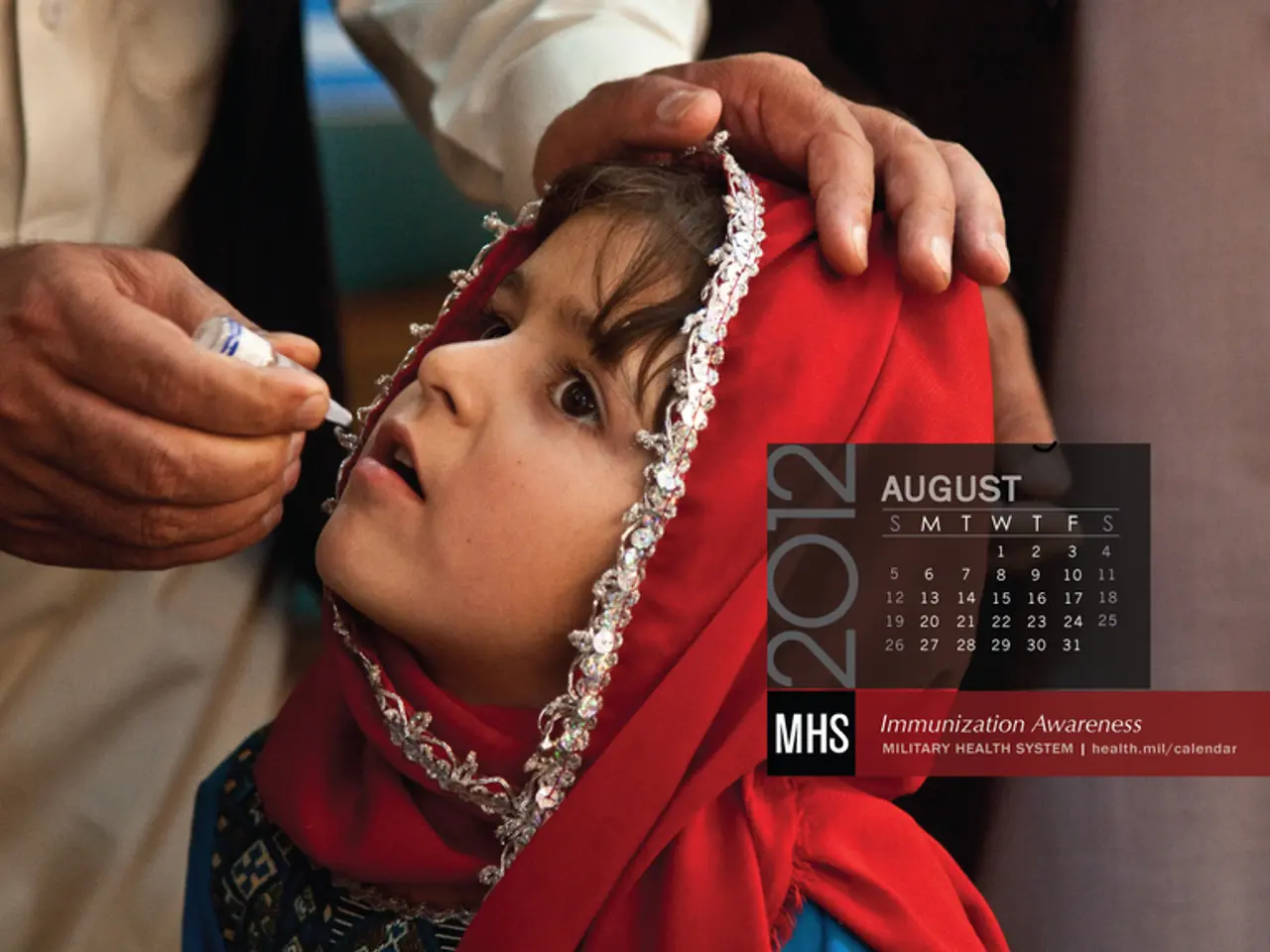COVID-19 Manifestation: Symptoms, Explanation, Duration, and Remedies
In the ongoing battle against COVID-19, a new term has emerged: COVID arm. This delayed skin reaction, which occurs several days after receiving the Moderna or Pfizer-BioNTech mRNA vaccines, is a result of an immune-mediated hypersensitivity reaction at the injection site [1].
Symptoms of COVID arm typically include redness, swelling, itching, and sometimes mild pain or skin darkening around the vaccination site. In some cases, a rash may develop, which can be red, purple, or discolored. The rash may also spread to the hands or fingers [1].
The immune system's delayed response triggers the creation of antibodies to fight off the perceived infection, leading to localized inflammation days after the initial injection. This reaction is not an infection or an immediate allergic reaction but reflects a robust immune response [1].
Fortunately, COVID arm is generally mild and self-limiting, resolving within a few days to a week. Treatment for this side effect is primarily supportive, with measures including applying cold compresses to reduce swelling and discomfort, using over-the-counter anti-inflammatory medications (such as ibuprofen) to alleviate symptoms, and using topical corticosteroids or oral antihistamines if itching or rash is bothersome [1].
If symptoms persist or worsen beyond about 24 hours, particularly with swelling and pain, medical advice should be sought [1]. It is important to note that COVID arm does not contraindicate further COVID-19 vaccination, although patients may be advised to inform healthcare providers so appropriate measures can be taken in subsequent doses [1].
In some cases, corticosteroids may be necessary for severe cases of COVID arm to ease the overactive immune response and help reduce swelling, itching, and pain [1].
While the exact cause of COVID arm is still under investigation, experts are looking into potential factors such as vaccine ingredients like neomycin, thiomersal, and polyethylene glycol, as well as differences between the Moderna and Pfizer vaccines [1]. It is also unclear why some individuals are more susceptible to this reaction than others.
It is essential to remember that COVID arm is not serious or life-threatening. However, anyone who feels severely unwell after vaccination or develops symptoms of anaphylaxis, such as difficulty breathing, low blood pressure, swelling of the tongue or throat, rash or hives, and other severe symptoms, should seek immediate medical attention [1].
In the rare event of anaphylaxis, an epinephrine pen should be used if available, emergency services should be called, and assistance should be provided until help arrives [1].
In conclusion, COVID arm is a delayed, immune-related skin reaction at the vaccine injection site, connected to the body’s immune response to the mRNA vaccine spike protein expression. It is treated with supportive measures since it resolves without serious complications [1].
[1] Centers for Disease Control and Prevention. (2021). COVID-19 Vaccine Information. [online] Available at: https://www.cdc.gov/coronavirus/2019-ncov/vaccines/recommendations/adverse-events.html [Accessed 25 May 2021].
- Taking care of the vaccination site can prevent worsening of symptoms for COVID arm, such as cleansing the area with warm water and mild soap.
- It's important to consult medical professionals for therapies and treatments to address mental health issues that may arise as a result of skin conditions or concerns related to the vaccine.
- The science behind immunizations and vaccines plays a crucial role in preventing the spread of medical conditions like COVID-19, even if temporary reactions like COVID arm occur.
- skin-care products containing CBD might help manage inflammation and discomfort caused by skin conditions like COVID arm, but further research is needed.
- Health and wellness involve monitoring oneself for any adverse reactions after receiving vaccines, and seeking medical advice if symptoms worsen or persist beyond 24 hours.
- In addition to vaccines, practicing preventative measures like wearing masks, washing hands, and maintaining social distancing also contribute to overall health and defense against various medical-conditions.




